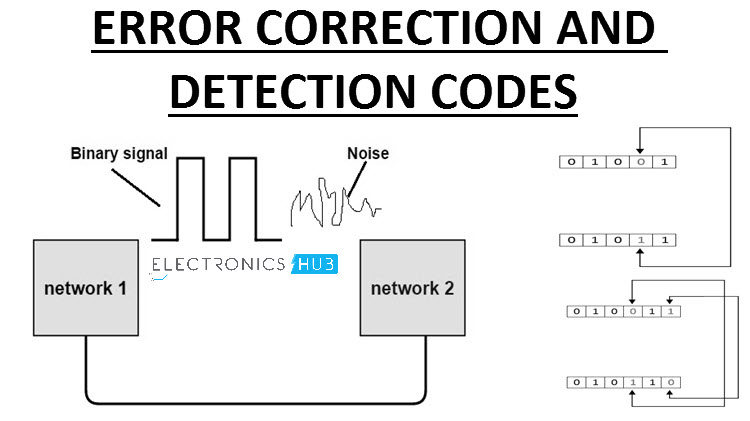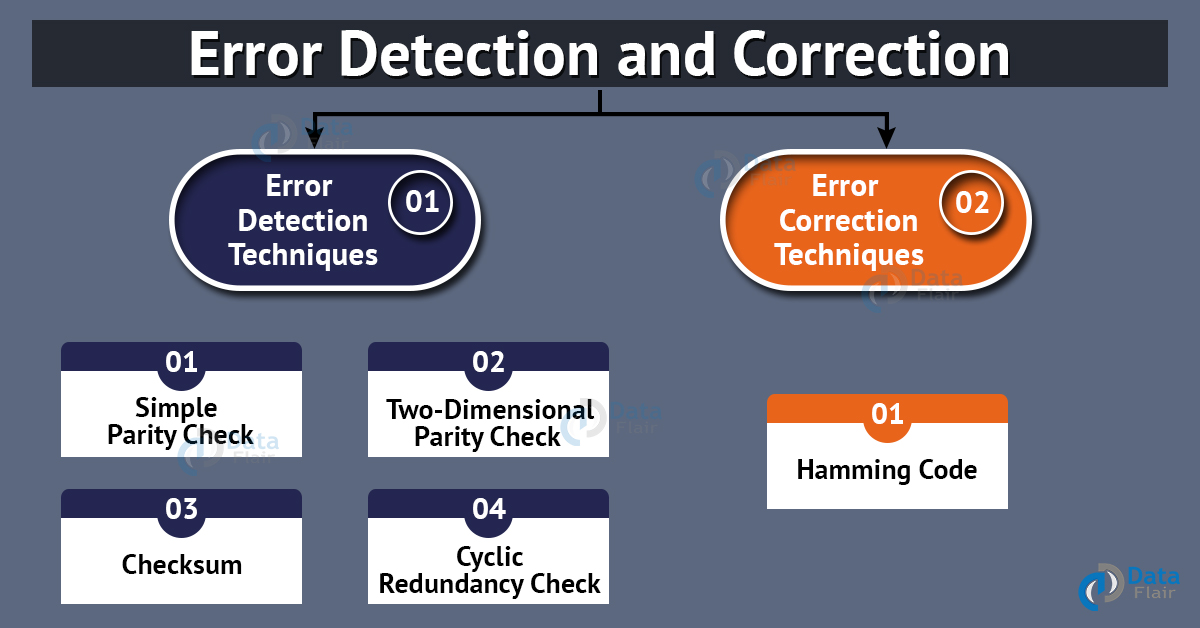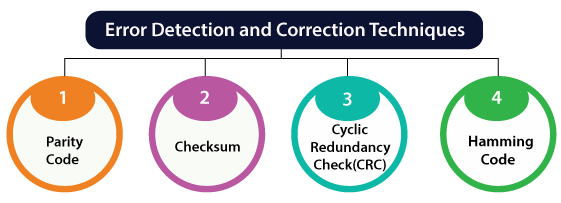Computing Which Technique Would You Use for Error Detection
It works by adding an additional bit to each character word transmitted. Parity refers to the number of bits set to 1 in the data item.
The parser examines the whole program and tries to find out the closest match for it which is error-free.

. CRC is used in storage devices like hard disks etc. Two-dimensional Parity check 3. To locate the bit in error redundant bits are used as parity bits for error detectionFor example we take ASCII words 7 bits data then there could be 8 kind of information we need.
The most popular Error Detecting Techniques are. One extra bit is transmitted in addition to the original bits to make the number of 1s even in. The checksum is an error detection technique.
Error Detection uses the concept of redundancy which means adding extra bits for detecting errors at the destination. However there is a way you can use checksums to implement. Simple Parity Check Chunks of data from the source undergo a check bit or parity bit maker system where a parity of.
Due to high time and space complexity this method is not implemented practically. When data is shared from one computer to another computer the system does not protect whether the information received by the computer is actually to the data transmitted by another computer. All error-detection and correction schemes add some redundancy ie some extra data to a message which receivers can use to check consistency of the delivered message and to recover data that has been determined to be corrupted.
Parity is simply an additional bit and is also called a redundant bit. Single parity check 2. The best-known error-detection method is called parity where a single extra bit is added to each byte of data and assigned a value of 1 or 0 typically according to whether there is an even or odd.
Again checksums are all about error detection but not error correction. There are 2 types of parity. Cyclic Redundancy Check VRC d.
A parity bit is appended at the. Error-detection and correction schemes can be either systematic or non-systematic. Comparing the Historical Data.
Simply parity check is the most simple mechanism of error detection in computer networks and a parity bit is used in this technique. For reliable communication errors must be deducted and Corrected. Error Detection Methods Following are the error detection methods or techniques of error detection in networking.
First seven bits to tell us which bit is error and one more bit to tell that there is no error. CRC produces a fixed-length data set based on the build of a file or larger data set. Study Material Lecturing Notes Assignment Reference Wiki description explanation brief detail.
Repetition code is another mechanism that relates to error detection. Two-dimensional parity check 3. The checksum is mostly used at the network layer and transport layer rather than the data-link layer.
It can be applied to any information. The most popular Error Detecting Techniques are. By brainstorming it is possible for an auditor to reduce the time taken for auditing and can find the error quite early.
Internet s TCP protocol provides error detection CD-ROMS devote around 14 of their total data capacity to redundant error correction information and music CDS only a little less and modem speeds above 28 kilobits per second would be impossible over public telephone lines without error correcting PROTOCOLS such as v90. Single parity check Two-dimensional parity check Checksum Cyclic redundancy check Single Parity Check Single Parity checking is the simple mechanism and inexpensive to detect the errors. CRC is based on binary division and is also called polynomial code checksum.
A parity bit is an extra bit transmitted with a data item chose to give the resulting bit seven or odd parity. Some popular techniques for error detection are. Basic approach used for error detection is the use of redundancy bits where additional bits are added to facilitate detection of errors.
A parity bit is an error detection mechanism. Simple Parity check 2. Vertical Redundancy Check VRC b.
The state of the bit is determined by a number of factors such as the type of parity and the number of logic-one bits in the data character. At the sender side each m bit of the data is divided into k segments. Other popular approaches for error detection are.
For each row parity check bits are calculated which is identical to a basic parity. The segments are added with the 1s complement arithmetic at the sender end to get the sum. The closest match program has less number of insertions deletions and changes of tokens to recover from erroneous input.
The cyclic redundancy check CRC is a technique used to detect errors in digital data. The common Error Detection methods are a. In this method the various ways in which an error can be conducted should be mentioned and thought upon.
Longitudinal Redundancy Check VRC c. Cyclic redundancy check. The data is.
The oldest method of error correction involves using parity.

Error Correction And Detection Codes Crc Hamming Parity

Error Detection And Correction In Computer Network Dataflair

Error Detection And Correction Code In Digital Electronics Javatpoint

No comments for "Computing Which Technique Would You Use for Error Detection"
Post a Comment